On July 30, 2025, the Kamchatka Peninsula in Russia’s far eastern region was struck by an earthquake of magnitude 8.8, prompting tsunami alerts in parts of Russia, Japan, and the United States’ Hawaii. Authorities had urged residents of coastal areas in these regions to remain vigilant and be prepared for evacuation.
In the aftermath of the quake, several unverified visuals, allegedly showing the state of panic and destruction, have been circulating on social media. Alt News debunks five such visuals, some of which were also amplified by news outlets.
Video 1
One of these visuals is a 29-second long video showing a tsunami wave hitting a coastal area. In the footage, two men can be seen fleeing in panic as rising waves engulf the shore.
This visual was shared on Facebook by Zee 24Ghanta Ayan Ghoshal on July 30 with the caption, “First, a devastating earthquake, then, a powerful tidal surge. Tsunami alert issued in Russia and Japan”. (archive)
প্রথমে ভয়াবহ ভূমিকম্প। তারপর তীব্র জলোচ্ছ্বাস। সুনামি সতর্কতা রাশিয়া এবং জাপানে।
Posted by Journalist Ayan Ghoshal on Tuesday 29 July 2025
Fire Newz (@FireNewz) also shared the video on X and linked it to the earthquake near Russia’s Kamchatka Peninsula. The post said that the quake triggered a tsunami, claiming thousands of lives without warning. (Archive)
Massive Earthquake triggers Tsunami taking thousands of lives in seconds with little to no warning. pic.twitter.com/mU7ODVZZRx
— 🔥Fire Newz (@FireNewz) July 30, 2025
The post garnered 1.6 million views.
Several other social media users made similar claims while sharing the clip. Below are some instances:
Fact Check
A reverse image search of one of the key frames from this video led us to a YouTube channel called Newsflare, where the video was uploaded four years ago—on May 10, 2021. The caption and description revealed that the footage was not recent, but shows the tsunami that struck Greenland’s west coast in July 2017. The video shows shocked fishermen who were able to save their lives by escaping just in time.
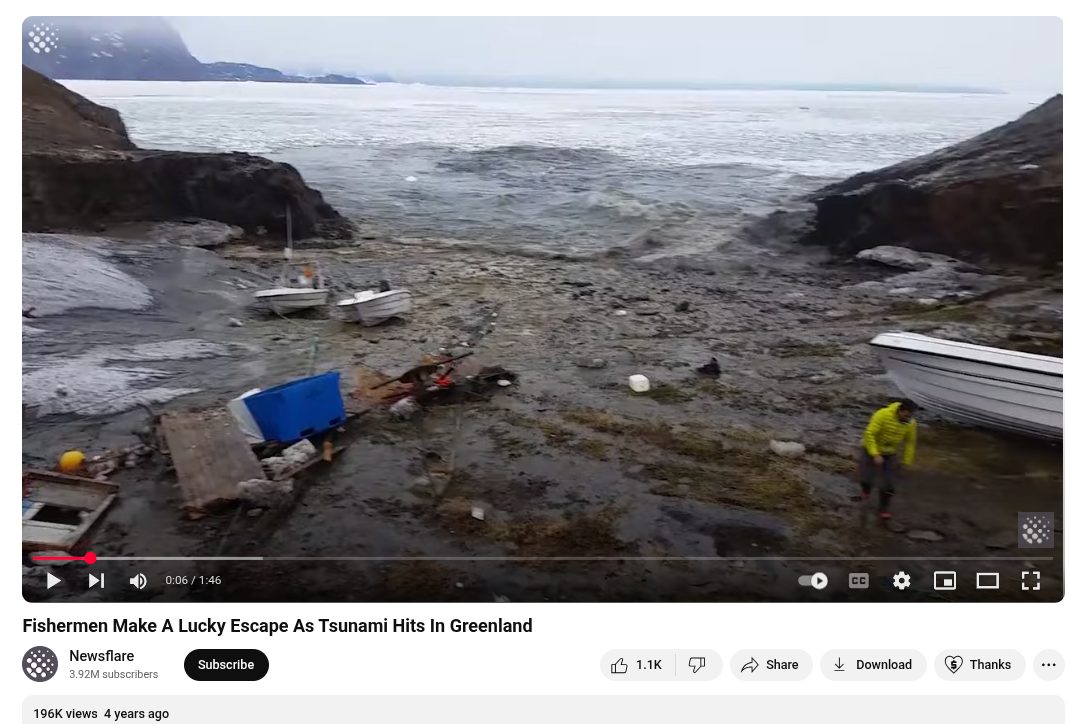
Taking cue from this, we searched with keywords and found a UNESCO report detailing the massive landslide in Greenland’s Umiammakku Nunaat peninsula on June 17, 2017, which triggered a mega-tsunami with waves of over 90 meters in height. The tsunami hit the village of Nuugaatsiaq within seven minutes, killing four people, injuring nine, and destroying 11 buildings. Around 200 residents were evacuated to Uummannaq by rescue helicopters.
Thus, the video shows two men fleeing a tsunami from eight years ago in Greenland; it is unrelated to the recent quake in Russia.
Video 2
The second video, over a minute long, of waves flooding streets, is viral on social media with claims that Japan, Russia and Alaska are witnessing a tsunami-like situation.
X user D. Sheetal Yadav (@Sheetal2242) shared the video on July 30, 2025, linking it to the earthquake in Russia’s Kamchatka peninsula. (archive)
जापान, रूस और अलास्का में 8.7 का भूकम्प आने के बाद सुनामी जैसे स्थिति बन आई है।
वहां की सरकारों ने समुंद्री इलाकों से दूर रहने की चेतावनी जारी की है। pic.twitter.com/HOzTvwldWA
— Dr. Sheetal yadav (@Sheetal2242) July 30, 2025
Several other social media users also shared the video with similar claims. A few of them can be seen in the gallery below.
Fact Check
A reverse image search of one of the key frames from this video led us to a YouTube channel Connect News SA, where the video was uploaded eight years ago—March 13, 2017.
According to the video’s caption, it captures a tsunami-like event in Durban, a coastal city in South Africa.
We also found a Facebook post from 2017 with the same visual. The caption mentioned that it is the beachfront of Durban’s KwaZulu-Natal province, which witnessed a “mini-tsunami-like” situation, caused by cyclone Enawo that had hit Madagascar.
Mini-tsunami en las playas de Durban, hoy
#SUDAFRICA | 12.03.2017
* Mini-tsunami en las playas de Durban, hoy.*Sorprendente imágenes fueron captadas desde la habitación de un hotel este domingo, cuando olas masivas golpearon el paseo marítimo de Durban en la provincia de KwaZulu-Natal, a orillas del océano Índico, justo cuando una multitud de personas disfrutaban de la jornada. Afortunadamente las playas estaban cerradas a los nadadores.
Se cree que los vientos fuertes y el gran oleaje han sido causados por el poderoso ciclón Enawo que golpeó a Madagascar hace cinco días, la tormenta más fuerte que golpeó la isla en 13 años.
Vídeo vía sapeople news
Posted by Red Climática Mundial on Sunday 12 March 2017
A March 12, 2017, report by South African digital publication The Citizen also featured this footage along with additional visuals, attributing the unexpected wave surges at Durban’s North Beach to cyclonic disturbances in the nearby region.
Therefore, this video too has no connection with the recent earthquake.
Video 3
The third video viral on social media as footage of the quake, over a minute long, features five white beluga whales stranded ashore while two men can be seen trying to rescue them. The clip is being shared with the claim that the whales appeared just a day before the powerful 8.8 magnitude earthquake struck the Kamchatka peninsula, suggesting it was a “warning from nature”. Social media users claimed the unusual behaviour of the whales preceded the seismic event.
X user Baba Banaras (@RealBababanaras) shared the video, claiming “nature always knows first” and suggesting that the video of the whales was recorded a day before the earthquake.
Yesterday, five beluga whales washed ashore in Kamchatka, Russia, the exact epicenter of today’s record-shattering magnitude 8.8 earthquake.
Nature always knows first.
This was the warning. pic.twitter.com/MuLutHXQrz— Baba Banaras™ (@RealBababanaras) July 30, 2025
Several other social media users have shared the same video with similar claims. A few of them can be seen in the gallery below.
Fact Check
A reverse image search of a key frame led us to the Russian social media and networking platform VK Videos, where the same footage was uploaded on August 14, 2023.
A keyword search led us to a Newsweek report dated August 15, 2023, which also features the same video. The caption in the video report mentions that residents of Kamchatka saved beluga whales.
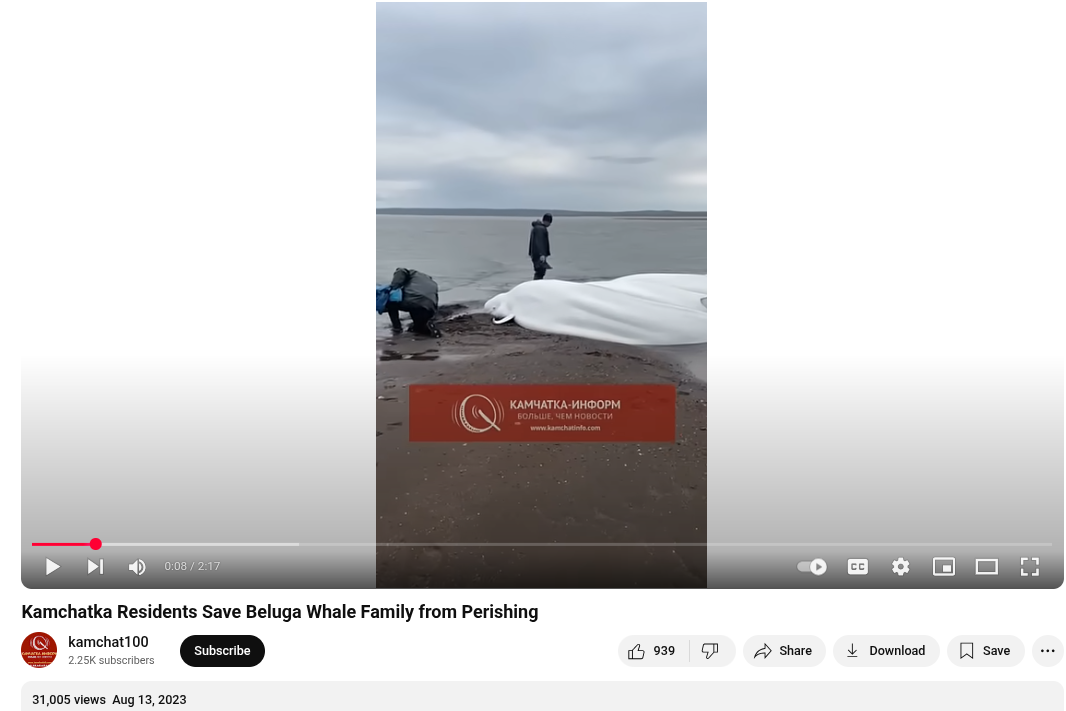
According to the report, the beluga whales were stranded on the shore and local fishermen kept pouring water to keep them alive until the tide eventually carried them back to the sea of Okhotsk.
Therefore, this video too does not depict the recent quake. It dates back to August 2023 and shows whales stranded in the Kamchatka coast for reasons not known.
Video 4
The fourth viral clip linked to the Russia quake is CCTV footage, about 22 seconds long, that shows shelves inside a store collapsing while the storekeeper is almost buried in it. Media outlet ETNow (@ETNowLive) shared this video on X on July 30, 2025, with the caption that a massive earthquake struck Russia.
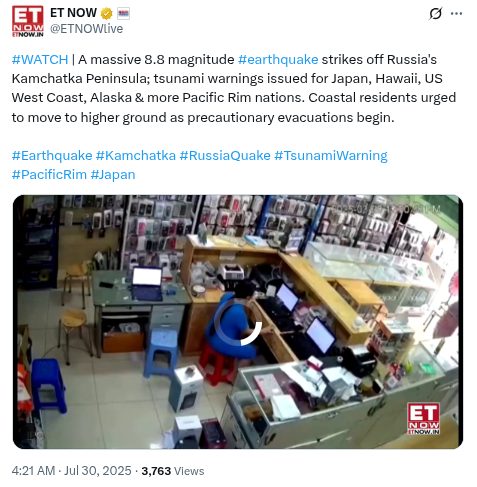
Several others, including journalist Rubika Liyaquat and the account of Punjab Kesari, shared the video with similar claims. A few of them are present in the gallery below.
Fact Check
A reverse image search of one of the key frames led us to a YouTube channel, 2025 Sagaing Earthquake Archive where the same video was uploaded on April 20, 2025. The caption said that the video depicted the aftermath of a 7.7 magnitude earthquake in Myanmar.
We then found a Newsflare report with the same video, but clearer, with the date (March 28, 2025) and time-stamp visible in the CCTV footage. According to the report, the video captures the moment tremors struck a shop in Mandalay, Myanmar.
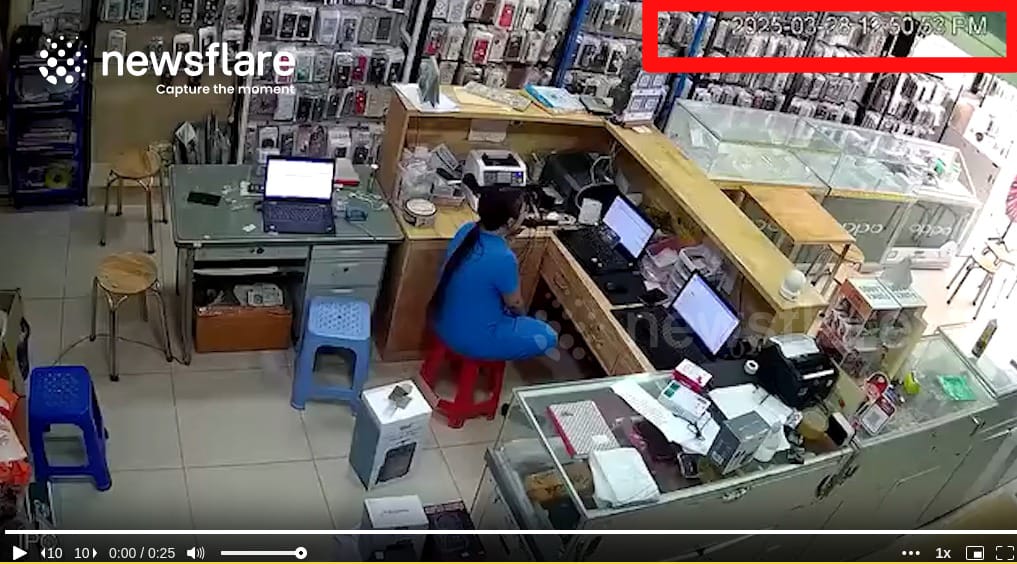
We also found a World Health Organization update that Myanmar’s central Sagaing region, near Mandalay, was struck by two powerful earthquakes—of 7.7 magnitude and another of 6.4 magnitude— on March 28, 2025.
Therefore, the CCTV footage is 4 months old and unrelated to the recent earthquake in Russia.
Video 5
A 17-second aerial video showing huge waves crashing on the shore is also being shared on social media as a visual of the recent 8.8 magnitude earthquake in the Kamchatka Peninsula, Russia.
X user Arun Chaudhary shared the video on July 30, 2025, linking it to the tsunami alerts issued after the earthquake.
#Tsunami high alert in alaska , hawaii ( japan )
After Massive #earthquake magnitude of 8.7 in eastern Russia kamchatka peninsula.🚨
Pray for the japan and russia peoples 🙏🏻 pic.twitter.com/u2fm2Lrtxb— Arun Chaudhary🇮🇳 (@iarunchaudhary) July 30, 2025
Several other social media users have also shared the video with similar claims.
Fact Check
A reverse image search of a key frame from the clip led us to an Instagram post from April 11, 2025, shared by the account stat.us.ai. The accompanying caption reads, “This is what a massive tsunami would look like, triggered by a powerful undersea earthquake,” indicating that the footage was not real, but a simulation. The account mostly shared AI-generated content, without any explicit disclaimers regarding the synthetic nature of its content.
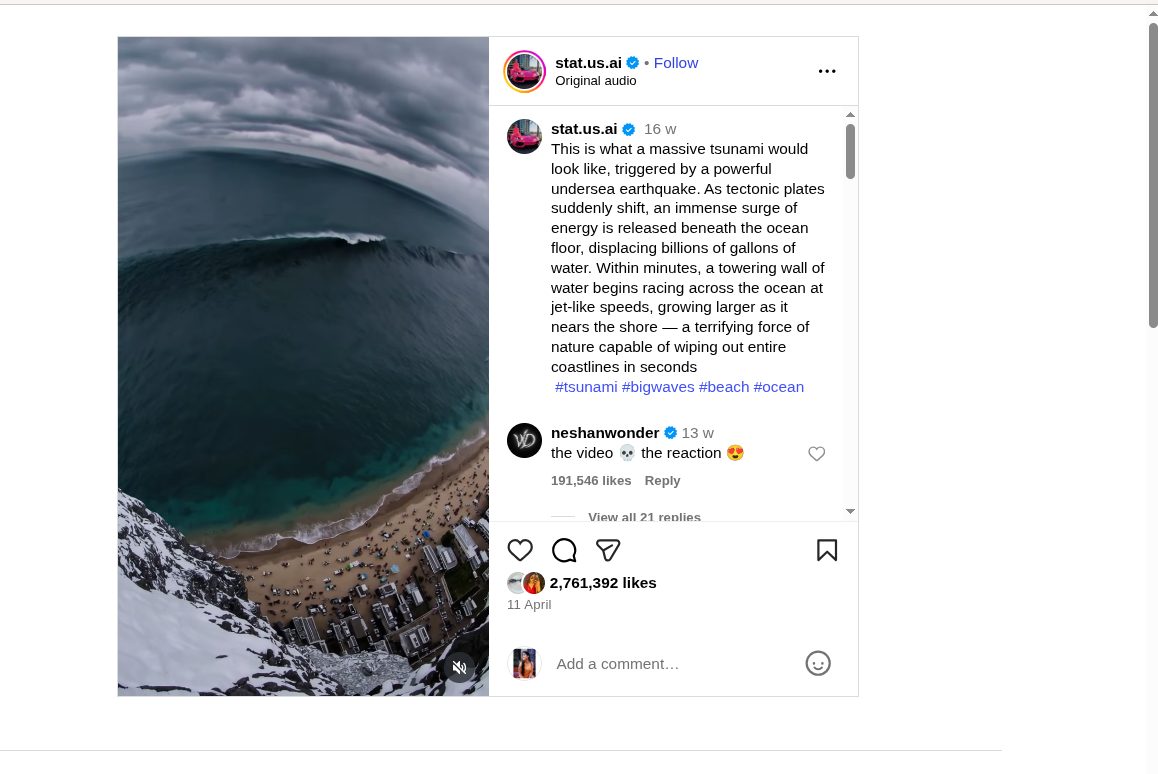
On scrutinising the video further, we also found that some of the visuals had an almost unrealistic clarity, sparking doubts that this was AI-generated. We also found a YouTube short of the same video uploaded on July 27, 2025 whose description clearly mentions that it is altered or synthetic content.
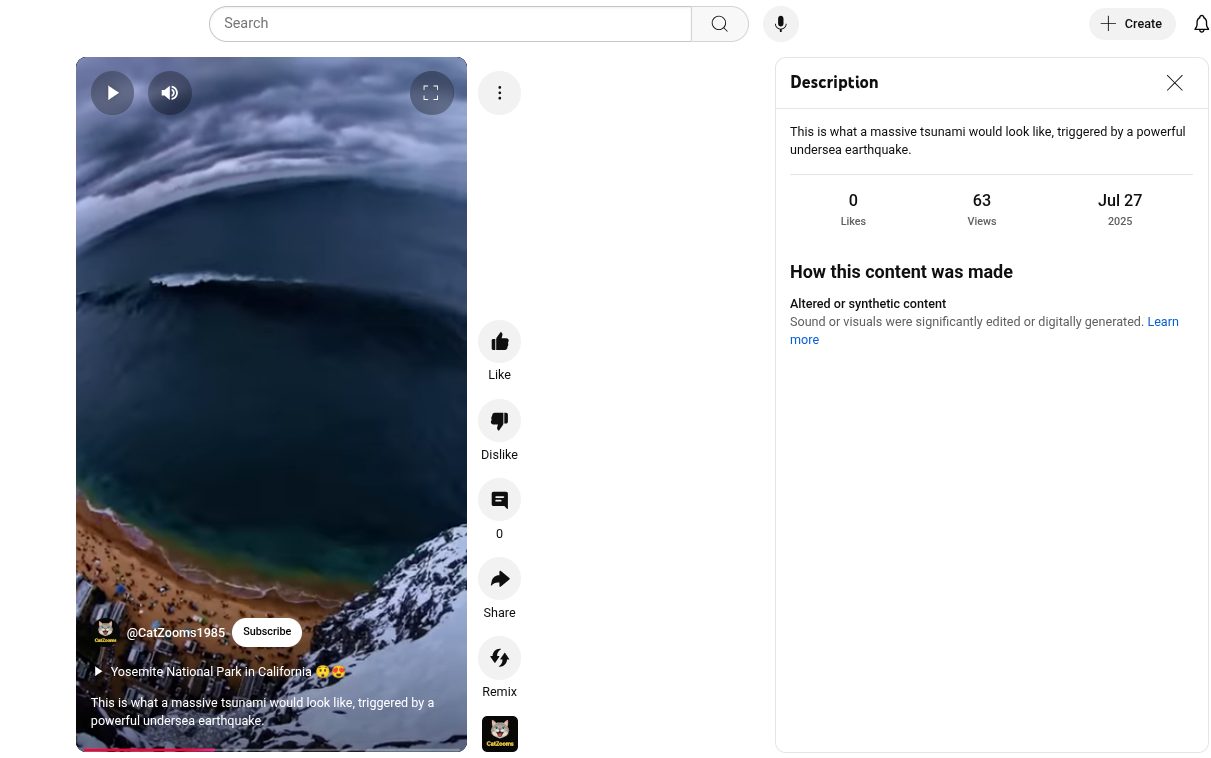
An AI content detection tool also indicated that the clip was 99% likely to be AI-generated.
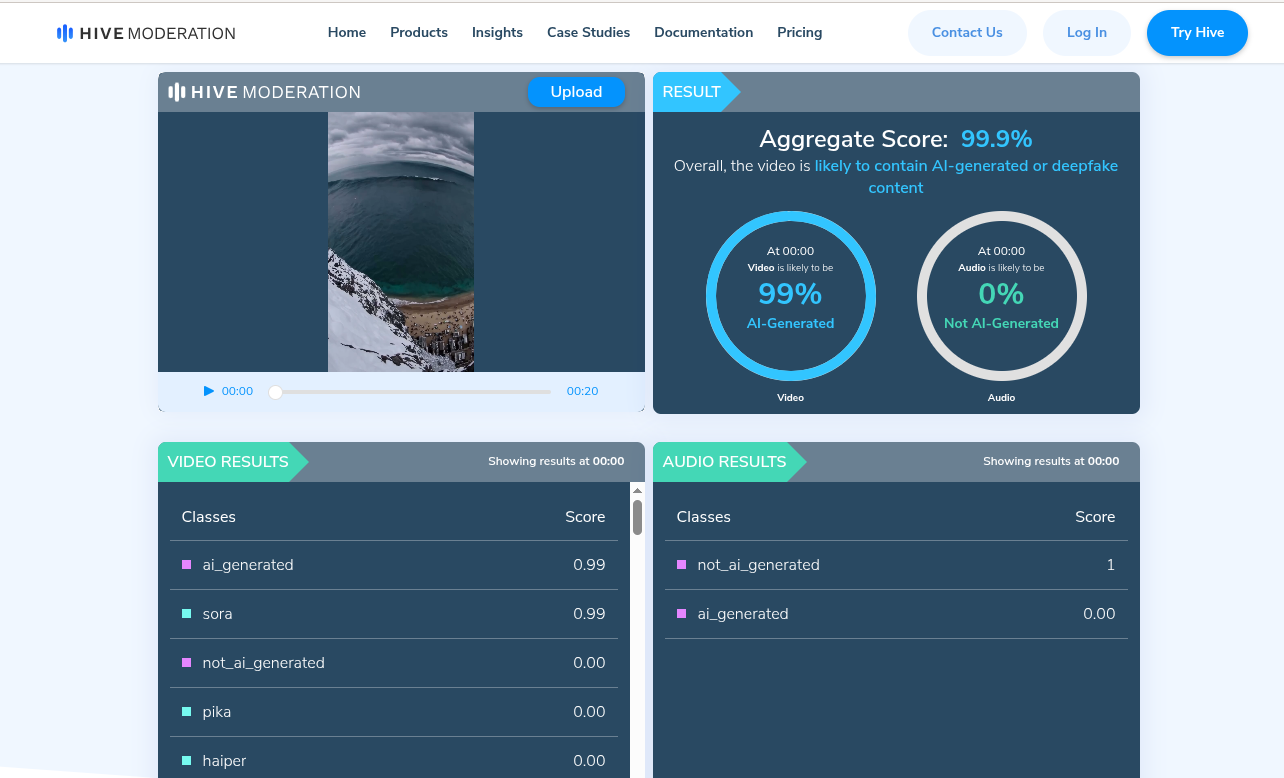
Thus, this video is likely generated using AI and is neither real nor linked to the recent Kamchatka earthquake.
Independent journalism that speaks truth to power and is free of corporate and political control is possible only when people start contributing towards the same. Please consider donating towards this endeavour to fight fake news and misinformation.




